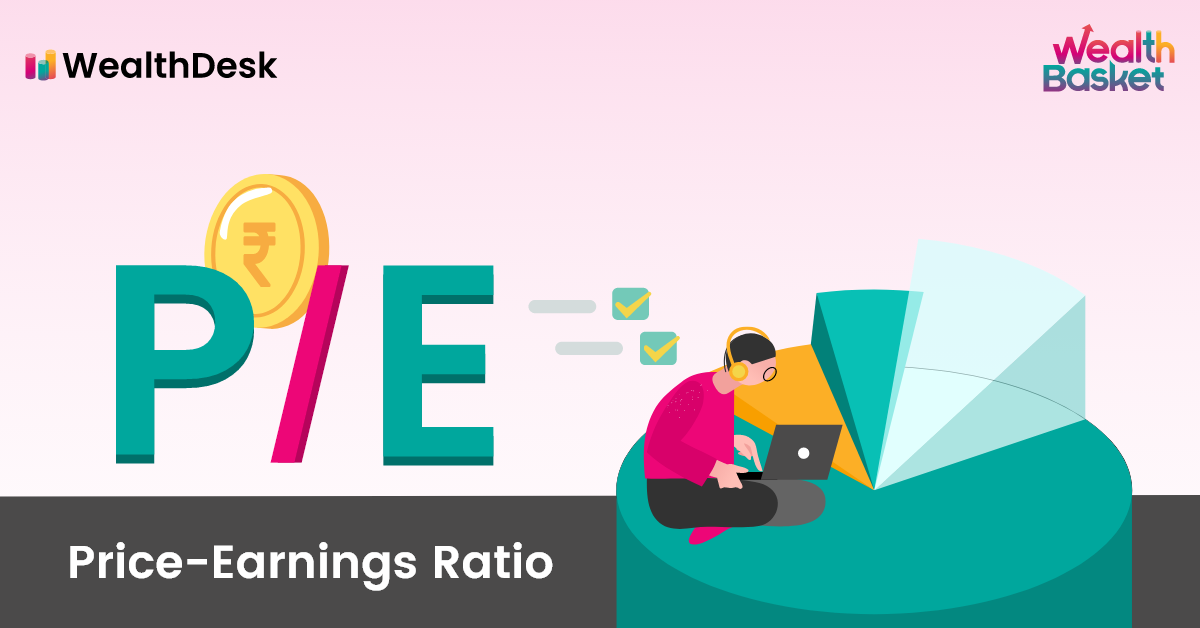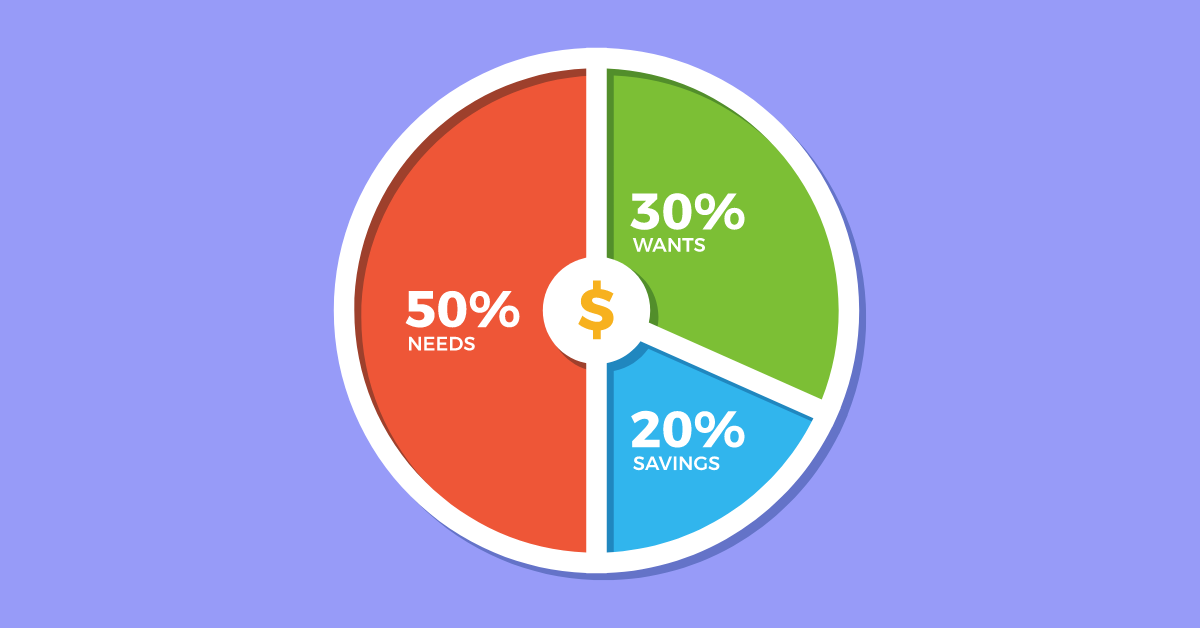In a hunt for sound stocks, investors assess the companies from various perspectives. Multiple types of analysis can strengthen the perspectives. Fundamental analysis is one such method that can help you identify the fair market value of the stock.
Multiple ratios are based on the fundamental analysis. A crucial ratio that many investors use to assess the company from a valuation perspective is the price-to-earnings ratio (P/E ratio).
This article will guide you on the price-to-earnings ratio, how to calculate it, why it is essential, and what is considered a good P/E ratio.
What Is The Price To Earnings (P/E) Ratio?
The price-to-earnings ratio is a metric that shows the relationship between a stock’s current market price and earnings per share. It is also called price multiple and earnings multiple. The primary purpose of this metric is to provide better insights into the stock’s value in the market.
The price-to-earnings ratio is also famously known in its abbreviated form P/E ratio. It helps you to decide if the stock prices are overvalued or undervalued.
How To Calculate The P/E Ratio?
The calculation of the P/E ratio involves two variables, the current market price of the stock and earnings per share (EPS). You can calculate EPS by dividing the net income available to equity shareholders by the number of outstanding equity shares (Such information is available online on various portals under the financial statements category of the company).
Once you have EPS handy, you can easily calculate the price-to-earnings ratio using the following formula.
P/E ratio = Current market price of the stock / EPS
For instance, Nihal wants to find out the price-to-earnings ratio of XYZ Ltd, which is trading at ₹368 currently and has a net income of ₹5,50,000. The company pays a ₹1,50,000 dividend to preferred shareholders, and its number of equity shares outstanding amounts to 80,000.
To find out the P/E ratio, first, Nihal needs to calculate EPS. From the data, it is clear that the income available to common stockholders is ₹4,00,000 (₹5,50,000 – ₹1,50,000). Therefore, EPS is ₹5 (₹4,00,000/80,000 outstanding equity shares).
Now, he can calculate the P/E ratio.
P/E ratio = 368/5 = 73.6
Hence, it implies that investors are willing to pay ₹73.6 for each rupee of the company’s earnings.
Why Is The P/E Ratio Essential For You?
- To evaluate the stock
When calculating the P/E ratio, you compare the stock’s market value with its earnings. Higher and lower P/E ratio gives different indications for the stock.
- High P/E ratio
If the P/E ratio is higher, you need to pay more per rupee of a company’s earnings to buy its stock. A higher P/E ratio may signal overvalued stock. Another reason for a higher P/E ratio can be investors’ high hopes for the company’s future earnings.
- Low P/E ratio
Many investors look for stocks with a lower P/E ratio, thinking such stocks are yet to reach their intrinsic value. Such stocks can offer higher returns when they arrive at a fair price. However, it can be a signal of internal faults of the company, too. A lower P/E ratio may also suggest that investors are unsure about the company’s future growth.
- To compare the stock with peers in the industry:
Say, Kiyan is optimistic about the fintech industry, though confused about which stock to buy from that industry. He identified the industry’s top companies with similar characteristics and life cycle stages. He then compared the P/E ratio of these companies to decide which stock to buy.
You can do it, too. You can also compare the P/E ratio of the company with the industry P/E to make a better investment decision.
What Is A Good P/E Ratio For The Stock?
Investors often get confused about whether the P/E ratio of a particular stock is good enough. However, there is no clear-cut ideal P/E ratio that fits all companies.
For instance, ABC and XYZ have a P/E ratio of 40 and 35, respectively. At first sight, XYZ may seem to have a better P/E ratio. However, this insight makes sense if they belong to the same industry and at the same life cycle phase.
The comparison would not make sense if ABC is an FMCG company and XYZ is from the banking and insurance space. ABC may have lower and XYZ may have above the industry P/E. You can say ABC has a better P/E ratio in such a case.
Moreover, whether the P/E is reasonable also depends on the market conditions, and the stock may have a higher P/E ratio when the market is bullish and vice versa.
Final Thoughts
The P/E ratio is one of the important metrics you can use to make an investment decision. Your investment decision can be wiser when you compare the P/E of the stock with similar companies. However, no sole metric can assure stock performance. Therefore, you should consider the P/E ratio with other fundamental and technical elements.
At WealthDesk, we help you make your investment journey hassle-free by offering ready-made WealthBaskets. WealthBaskets are the combination of stocks and ETFs, reflecting a strategy, idea, or theme. WealthBaskets are created and monitored by SEBI registered professionals.
FAQs
Investors often consider a lower P/E ratio better as it signifies that they are paying a lesser price per rupee of the company’s earnings. However, there is no guarantee that a lower P/E ratio is always better.
A High P/E ratio of a stock suggests you need to pay a higher price, per rupee of a company’s earnings, to buy that stock. Therefore, some investors consider the stock overvalued. However, some investors find a high P/E ratio attractive, expecting high future growth. Hence, the answer to whether high P/E is good is very subjective.
Generally, investors tend to look for stocks with a lower P/E ratio. Though, it is not advisable to consider the P/E ratio as a sole factor in making your investment decision.
Buying stocks with a high P/E ratio means you are paying more price per rupee of the company’s earnings. Even if you have high hopes for the company’s future potential, you better consider multiple factors to decide whether to buy the stock.
There are multiple ways to know if a stock is undervalued. For instance, a lower P/E ratio, lower price/earnings-to-growth ratio, lower P/B ratio, higher dividend yields, etc., can help you find undervalued stocks.


















